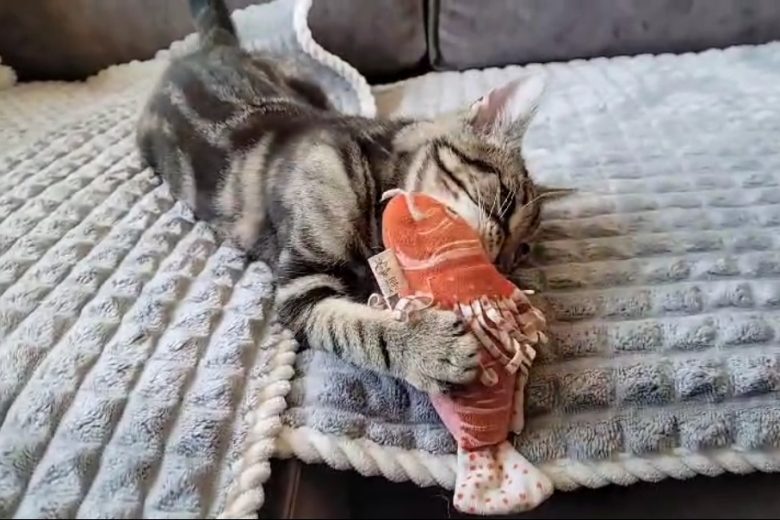How much time per day should i play with my cat?
Cats, those enigmatic and elegant creatures, bring joy and companionship to our lives. But beyond cuddles and purrs, they need active engagement to thrive. One common question among cat owners is: How much time per day should I play with my cat? The answer, while seemingly simple, involves understanding your cat’s individual needs and natural behaviors.
Why Playtime Matters for Cats
Before we delve into the specifics, let’s understand why playtime is crucial for our feline friends.
- Physical Health: Play helps cats maintain a healthy weight, strengthens their muscles, and improves cardiovascular health.
- Mental Stimulation: Cats are intelligent creatures, and play provides mental stimulation, preventing boredom and cognitive decline.
- Hunting Instincts: Play allows cats to express their natural hunting instincts, satisfying their predatory drives.
- Behavioral Health: Regular playtime can reduce stress, anxiety, and destructive behaviors.
- Bonding: Playtime strengthens the bond between you and your cat, fostering a deeper connection.
So, How Much Time Per Day Should I Play with My Cat?
There’s no one-size-fits-all answer. How much time per day should I play with my cat? depends on several factors, including:
- Age: Kittens and younger cats have higher energy levels and require more playtime than older cats.
- Breed: Some breeds are naturally more active than others.
- Personality: Individual cats have different play preferences and energy levels.
- Health: Cats with health conditions may have limited energy and require shorter play sessions.
- Your Schedule: Realistically, you have to find a schedule that works for both you and your pet.
General Guidelines
While individual needs vary, a general guideline is to aim for 15 to 30 minutes of interactive playtime per day. This can be broken down into shorter sessions throughout the day.
- Two 15-minute sessions: This is often ideal, particularly in the morning and evening, when cats are naturally more active.
- Three 10-minute sessions: This can be beneficial for kittens and high-energy cats.
- Multiple shorter bursts: Even a few minutes of play scattered throughout the day can make a difference.
Recognizing Your Cat’s Play Cues
Pay close attention to your cat’s body language to determine when they’re ready to play and when they’ve had enough.
- Signs of Playfulness: Dilated pupils, twitching tail, playful pouncing, and batting at toys.
- Signs of Overstimulation: Flattened ears, twitching tail (more aggressively), hissing, and biting.
Types of Play
Variety is key to keeping your cat engaged. Incorporate different types of play into your routine.
- Interactive Play: This involves you actively participating in the play session.
- Feather wands: These mimic birds and are excellent for encouraging pouncing and chasing.
- Laser pointers: These provide a fast-paced chase, but avoid shining them in your cat’s eyes.
- Fishing pole toys: These allow your cat to bat and chase a toy attached to a string.
- Solo Play: Provide toys that your cat can enjoy independently.
- Jingle balls: These provide auditory stimulation and encourage batting.
- Crinkle balls: The crinkling sound is irresistible to many cats.
- Puzzle feeders: These challenge your cat mentally and provide a rewarding treat.
- Environmental Enrichment: Create an environment that encourages exploration and play.
- Scratching posts: These satisfy your cat’s natural scratching instincts.
- Cat trees: These provide vertical space for climbing and perching.
- Window perches: These allow your cat to observe the outside world.
Tips for Maximizing Playtime
- Timing is key: Play with your cat when they’re most active, typically in the morning and evening.
- End on a high note: Finish each play session with a successful “catch,” allowing your cat to satisfy their hunting instincts.
- Vary the toys: Rotate toys to keep your cat interested and prevent boredom.
- Use positive reinforcement: Reward your cat with praise and treats during and after playtime.
- Be patient: Some cats may take time to warm up to playtime.
- Adapt to your cat’s age: Kittens need high energy play, senior cats need shorter, gentler sessions.
Addressing Common Concerns
- “My cat doesn’t seem interested in playing.” Try different toys and play techniques. Some cats prefer slow, deliberate movements, while others prefer fast-paced chases.
- “I don’t have time for long play sessions.” Even a few minutes of play can make a difference. Break up playtime into shorter sessions throughout the day.
- “My cat bites and scratches during play.” Redirect their attention to a toy and avoid using your hands as playthings.
Long-Term Benefits of Playtime
Regular playtime not only benefits your cat’s physical and mental health but also strengthens your bond and creates a more harmonious relationship. When considering How much time per day should I play with my cat? remember that those minutes are an investment into your cats overall wellbeing.
By understanding your cat’s individual needs and incorporating regular playtime into your routine, you can ensure a happy, healthy, and fulfilling life for your feline companion.
